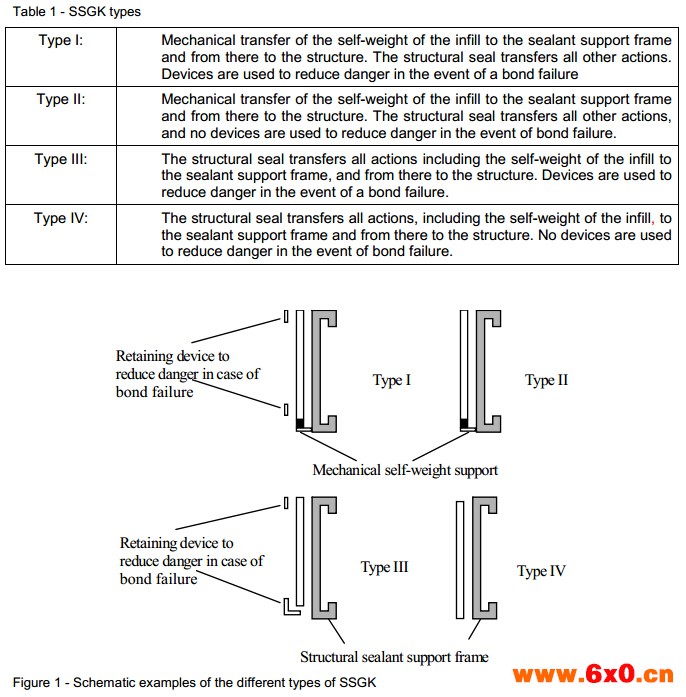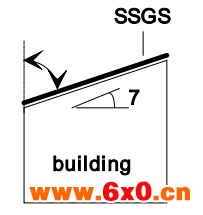本页面标准信息均来源于网络收集,或由参与标准制定的供应商提供,只作为参考使用,为确保测试结果的准确性、节省您的时间,如需ETAG 002-1999标准详细信息或ETAG 002-1999具体测试方法,欢迎与我们技术人员联系或给我们留言,我们将为您相关的技术支持。
ETAG 002-1999标准介绍
1 Preliminaries
1.1 Legal basis
This guideline for European Technical Approval has been established in full compliance with the provisions of Council Directive 89/106/EC (The Construction Products Directive) and has been established taking into account the following steps:
Issuing of the final mandate by the EC : 18 April 1996.
Adoption of the Guideline by EOTA (Executive Commission) : 2 June 1998.
Endorsement of the document by the EC
o SCC opinion of : 30 June - 1 July 1998.
o EC letter of : 24 September 1998.
SCC decision ConSTRUCT 00/427 concerning structural sealants as component of kit covered by existing ETAG
Progress file endorsed by EOTA Excom (written endorsement) : November 2005
This document is published by the Member States in their official language or languages according to Art 11.3 of the CPD.
1.2 Status of ETA Guidelines
1.2.1 An ETA is one of the two main types of technical specifications in the sense of the EC Construction Products Directive (89/106/EEC). This means that Member States shall presume the approved products fit for their intended use, i.e. that they enable works in which they are used to satisfy the Essential Requirements for an economically reasonable working life,provided that:
The works are properly designed and built
The conformity of the products with the ETA has been properly attested
1.2.2 An ETA Guideline is a basis for ETAs, i.e. a basis for technical assessment of the fitness for an intended use.
ETA Guidelines express the common understanding of the approval bodies of the provisions of the EC Construction Products Directive and of the Interpretative documents with regard to the products and uses concerned established within the framework of a mandate given by the EC Commission after consulting the EC Standing Committee for Construction.
1.2.3 ETA Guidelines are binding for the issuing of ETAs of the products concerned for an intended use when accepted by the EC Commission after consultation with the EC Standing Committee for Construction and published by the Member States in their official language or languages.
The applicability and the satisfaction of an ETA Guideline for a product and its intended use shall be assessed on a case-by-case basis by an authorised approval body.
Satisfaction of the provisions of an ETA Guideline (examinations, tests and evaluations) leads to a presumption of fitness for use only via this case-by-case evaluation.
Products that are outside the scope of an ETA Guideline may be considered where appropriate through the approved procedure without guidelines according to Art. 9.2 of the CPD.
ETA Guidelines requirements are set out in terms of objectives and of relevant actions to be taken.
ETA Guidelines specify values and characteristics. Conformity with these carries the presumption that the requirements set out are satisfied, whenever the state of the art permits such. The ETA Guidelines may indicate alternative possibilities for demonstrating satisfaction of the requirements.
This ETA Guideline incorporates, by dated or undated reference, provisions from other publications. These normative references are cited at the appropriate places in the text and the publications are listed below. For dated references subsequent amendments to, or revisions of these publications, apply to this ETA-Guideline only when incorporated in it by amendment or revision. For undated references, the latest dated revision of the publications referred to applies.
2 Scope
2.1 Scope of Guideline
This Guideline relates to Structural Sealant Glazing Kits (SSGK) for use as facades and roofs, or parts thereof, with glazing at any angle between vertical and 7° above horizontal (see Figures 1, 3 and 4). This part of the Guideline covers the general requirements for assessing kits and structuralsealants, and the specific requirements for supported (types I and II) and unsupported (types III and IV) systems (see Figure 1), where the structural seal adhesion surfaces are glass, either uncoated or with an inorganic coating, and anodised aluminium or stainless steel.
This part of the ETAG allows issuing ETAs on structural sealant glazing kits and on structural sealants. The SCC decision presently offers CE marking of the structural sealant as a possibility to the sealant producer, but this is not a requirement. The structural sealant may not be CE marked but assessed in the framework of SSGK. The structural sealant, if it contains its own CE marking, shall only be assessed for its suitability for use in SSGK.
Other parts of the document will cover the specific requirements for the assessment of the use of aluminium with a coating other than anodising, and the use of thermal breaks in SSG framing systems.
When needed, other parts of the Guideline are to be used together with this general document as indicated.
Structural Sealant Glazing Kits
Structural Sealant Glazing Systems use the technique of bonding glazing in order to redistribute loads to the facade structure via a structural sealant and a structural sealant support frame.
These systems are normally marketed as a “kit” of components (ref. EC Guidance Paper C "The treatment of kits and systems under the Construction Products Directive"), giving a designer the choice of components required for a particular facade.
The ETA will indicate details on the components it covers, to be used in accordance with the ETA holder's design rules and installation guide. Typically, some of the components will be manufactured by the ETA holder and some by other manufacturers.
This Guideline covers the performance aspects of a facade making use of the Structural Sealant Glazing System as shown in Figure 4, and allows for the options possible within the kit. The kit components may include the members required for the facade structure, but these are not covered by this Guideline (members indicated by dashes in Figure 4). They, however, will need to be taken into account when dealing with the pre-conditions specified in Chapter 7.
The product description shall include the components necessary to determine the performance as specified below (non-exhaustive list):
- A set of mutually compatible framing members and their assembly technique (corner, T - liaison) and their tightness technique. This set of members serves as the structural sealant support frame
- A set of accessory profiles and accessories (mechanical self-weight support, anchorage of the structural sealant support frame to the frame ….)
- The generic type of infill element (glass)
- An air and watertightness technique including
o The gaskets (material and geometry) and their corner assembling technique (bonding or welding)
o A rebate ventilation and drainage technique (section and distance between the drainage and ventilation holes)
o Any complementary provisions for tightness such as sealant ropes, etc.
- Ironworks identified by a trademark and a serial reference
- An infill element setting technique including
o The blocking of the infill elements in the framework and their setting blocks etc.
o The tightness of the infill panel by sealant or gasket (material and geometry)
- Any other components or accessories as relevant
SSGK can be constructed in four different ways. These are described below in Table 1 and dep in Figure 1.
Devices to reduce danger in the event of bond failure may be required by national regulations.

Current state of the art necessitates a number of general restrictions:
The structural bond is to be silicone in the form of a linear bead
The design may include discontinuities in the structural bond, but no edge may be entirely free; some edges may be mechanically beaded
The structural sealant is to be factory applied
In due course, further parts of the Guideline may be issued to reduce these restrictions.
It is assumed that system designers will follow normal good practice regarding such matters as glass supply condition (cleanliness, freedom from defects, etc) and application (use of heat-strengthened or laminated glass, etc. as required). These matters are not covered by this Guideline as they are adequately covered by the codes and standards. There are, however, a number of important requirements that directly affect the design of SSG systems. The following list, though not exhaustive,sets out some of these requirements:
The machining of glass (for example, when required for fitting glazing safety devices) may only be carried out by and/or in agreement with the glass manufacturer.
Glass shall be selected to ensure it will safely transmit the wind load to the structural sealant support frame via the structural sealant in accordance with national design codes.
Structural sealant adhesion on three surfaces is not permissible (see Figure 2). Adhesion to a spacer in an insulating glass unit shall not be considered a structural bond

The angle shows the range of permissible inclinations above 7° (see Figure 3)

Figure 3 - Permissible inclination θ
The present specifications do not apply to a composite system in which the interior pane of the IGU is mechanically fastened and the exterior pane is retained by structural sealant
Types III and IV SSGK are only applicable to single glass units. For insulating glass units or laminated glass, each pane of glass shall be supported (type I or II)
2.1.1 Structural sealant
The structural sealants are to be used in a structural sealant glazing system (SSGK) to bond glazing products to metallic structural seal support frames and/or as the second barrier of the structural hermetic seal in insulating glass units. (See fig. 4)
The Essential Requirements ER2: Safety in case of fire, ER3: Hygiene, health and environment, ER4:
Safety in use, ER6: Energy economy and heat retention shall be fulfilled, and failure of the structural bond would cause risk to human life and/or have considerable economic consequences.
The provisions made in this European Technical Approval Guideline are based on the assumed 25-year working life of the SSGK in bonding with a structural function. The assumed working life of a system cannot be taken as a guarantee given by the producer, but is to be used as a means for selecting the appropriate product in relation to the expected economically reasonable working life of the works.
The structural sealants are normally available on the market, independent of the kit, and can be CE marked as a kit component (ref. EC Guidance Paper C "The treatment of kits and systems under the Construction Products Directive").
The ETA will mention the generic and specific (when relevant) types of structural seal adhesion substrates it covers, and will detail the complementary assessment to be done in the framework of the kit ETA when the specific substrate is not mentioned in the ETA for the sealant.
2.2 Use categories
The specification of some SSG kits and the related approach to their assessment necessitates the application of a Use Category in respect of the following aspect of performance:
Use at low temperature
If specified by the manufacturer, kits may be tested at a very low temperature (see 5.1.4.1) to assess their suitability for use in cold regions, e.g. in Nordic countries.
▼ETAG 002-1999第三方检测机构
以上标准信息来自互联网搜索整理,如需了解完整的ETAG 002-1999的信息或ETAG 002-1999标准解读,欢迎详询。










 QQ交流群
QQ交流群

